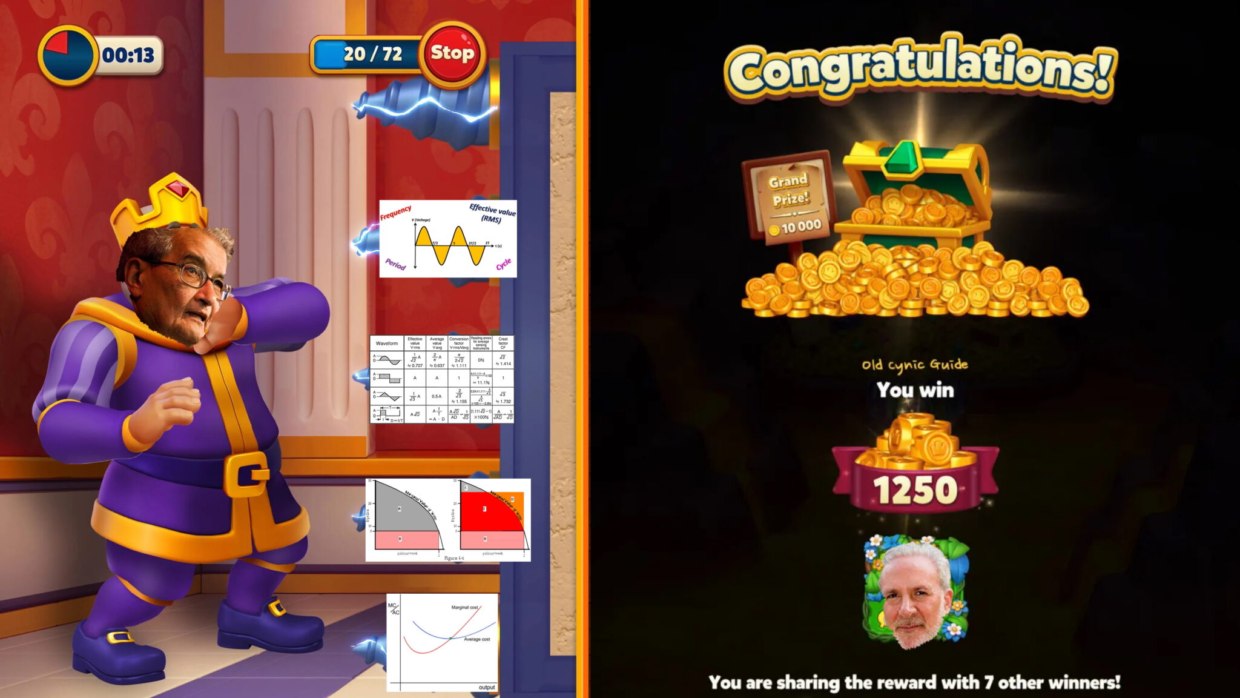
The Economics of Match Events
Journal 8 Phillip Black February 24
Nearly all economic activity in match-based or “saga”-based metas follows the fundamental relationship:
Revenuei=Gold Sinki=Attemptsi⋅Gold Sink Per AttemptiRevenuei=Gold Sinki=Attemptsi⋅Gold Sink Per Attempti
where,
∙∙ RevenueiRevenuei is the revenue for the iith player.∙∙ AttemptsiAttemptsi is the number of attempts made by the iith player.∙∙ Gold Sink Per AttemptiGold Sink Per Attempti is the average of gold spent per attempt by the iith player.
Holding Gold Sink Per AttemptGold Sink Per Attempt constant, an increase in AttemptsAttempts leads to higher RevenueRevenue. Similarly, increasing the Gold Sink Per AttemptGold Sink Per Attempt while holding AttemptsAttempts constant also raises RevenueRevenue. Many innovations in match economies operate within this framework. For instance, a “super light ball” mechanic increases AttemptsAttempts but reduces the Gold Sink Per AttemptGold Sink Per Attempt. Events follow the same structure.
Basic Match Model
At the aggregate level, revenue across all players is:Revenue=∑i(Attemptsi⋅Gold Sink Per Attempti)Revenue=∑i(Attemptsi⋅Gold Sink Per Attempti)
Event Uplift
Events affect revenue by shifting the number of attempts or the gold sink per attempt. The marginal uplift from an event (e)(e) is given by:Event Uplifte=ΔAttemptse⋅ΔGold Sink Per AttempteEvent Uplifte=ΔAttemptse⋅ΔGold Sink Per Attemptewhere ΔAttemptsΔAttempts and ΔGold Sink Per AttemptΔGold Sink Per Attempt are increases due to the event.
Effective Rewards
Events also distribute rewards, which function as a gold source in a simple gold-only economy. The effective rewards generated by event (e)(e) are:Effective Rewardse=∑s(Reward Amounts,e⋅Win Rates,e)Effective Rewardse=∑s(Reward Amounts,e⋅Win Rates,e)where:∙∙ Effective Rewardsd,eEffective Rewardsd,e is the effective gold rewards from event (e)(e).∙∙ ss indexes different reward tracks, or stages in the event.∙∙ Reward Amounts,eReward Amounts,e is the gold amount granted at stage (s)(s) of event (e)(e).∙∙ Win Rates,eWin Rates,e is the probability that a player reaches stage (s)(s) and claims the reward in event (e)(e).
Generally, games find that engagement is also strongest when the effective rewards are highest. Tracking either progression speed (win rate) or reward amounts amplify any event’s effect.

Event Effect: Net Source or Sink
The net economic effect of an event is determined by subtracting the total effective rewards from the total event uplift:
Event Effecte=Event Uplifte–Effective RewardseEvent Effecte=Event Uplifte–Effective RewardseIf Event Effecte>0Event Effecte>0, the event acts as a net sink, removing more gold from the economy than it introduces. Whereas, if Event Effecte<0Event Effecte<0 the event acts as a net source, introducing more gold than it removes.
Not all events need to be net sinks. Events can function as planned gold sources, offsetting reductions in base saga rewards to maintain long-run economic stability. In this scenario, base saga victory rewards are reduced while event rewards compensate, ensuring that the total gold sourced per attempt remains stable but with different sources.
How Many Events to Run
For a series of events that act as net sinks, running multiple events concurrently increases total gold sink. However, each additional event faces diminishing returns in increasing either AttemptsAttempts or Gold Sink Per AttemptGold Sink Per Attempt, while Effective RewardsEffective Rewards remains relatively stable, or monotonically increasing (win rate are pushed upward as rewards rise, even though the rate of increase declines at event +1 event).Event Effecte=γ(e−1)⋅(Base Uplift–Effective Rewardse)Event Effecte=γ(e−1)⋅(Base Uplift–Effective Rewardse)Where,∙∙ Base UpliftBase Uplift is the uplift if the event ran alone.∙∙ Effective RewardseEffective Rewardse is gold distributed by the event.∙∙ γγ controls how quickly subsequent events’ net effect diminishes.∙∙ As ee increases, γ(e−1)γ(e−1) becomes smaller, reflecting diminishing returns for each additional event.The optimal number of concurrent events occurs when:n∑e=1Event Effecte=0∑e=1nEvent Effecte=0
Beyond this point, an event is a net source, which is not sustainable in the long run without other economic adjustments. This should be how teams assess event stacking! Set up A/B tests to find this zero point; by all means, Royale Match suggests 5-6 events.
Conclusion
Match events should be rigorously modeled to understand their economic effects. Contrary to common belief, an event’s effectiveness is not solely determined by its ability to act as a net sink. Structuring events as alternative sources of rewards can be LTV-positive compared to embedding the same rewards in saga progression.
Balancing reward scalars—designing an event with the same Event Effect but significantly higher uplift and effective rewards—creates different economic trade-offs. Remember, these two are causally linked: offering more rewards increases attempts. Or consider experimenting with holding the effective rewards constant, increasing the win rate but lowering the prize.







